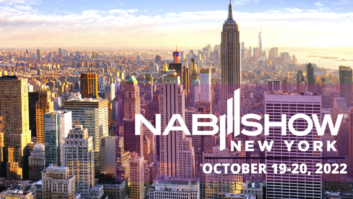Greater Media did it. ABC Radio Networks did it. Others have too. More organizations likely will add to their payrolls a position with a title like “director, interactive division.”
As broadcasters explore ways of monetizing the Internet, they’re putting more resources behind their efforts.
John Rosso is senior vice president, affiliate relations for ABC Radio Networks. The company recently added “and digital media” to his title.
“We are extending all of the ABC radio brands into the digital world,” he said. “The first thing we want to do is increase the quantity and quality of the Internet content for all our shows. When you go to (syndicated talk host) Mark Levin’s show site, it’s good, but there is a long way we can go to provide the audience with a deeper interaction. Then we will build a platform that will allow us to share that content with all our broadcast affiliates.”
Rosso also sees mobile technology as a growth area.
“We’ve already gotten into that with Radio Disney and ESPN via Sprint,” he said. “We have a strategy to stream local stations on mobile phones. We have had a turnkey solution for Internet streaming for a while and want to make it just that easy for our ABC affiliates to get into mobile devices, too.”
Would you like some pictures with that audio?
“Next is adding a video component to what we do,” said Rosso. “When we record audio interviews with a band for one of our show prep services, we’ll be capturing video as well. We’re building a library for our affiliates that they can publish on their Web sites.”
But this is a road with plenty of blind turns ahead.
“The biggest obstacle we face is fear,” said Rosso. “Broadcasters fear we will cannibalize our on-air audiences, although that fear is fading. Next is the fear of cost, and third is the whole intellectual rights issue. We need to be very careful with this content to make sure we have the proper rights to all the components because the potential liability is huge. Given the litigiousness of our world, it’s important for every company to consider this.”
Connecting with the listener
Paul Krasinski is newly appointed director of Greater Media Inc.’s digital interactive division, having joined the company in January.
“People still spend five times as much time with the radio as they do with the Internet,” he said. “So radio will be a great platform for what we’re trying to do. Our goal is to enable listeners to use our brand. And with the thousands and thousands of people we reach, new communities are emerging.”
By communities, Krasinski is referring to sub-groups within the traditional demographics.
“When we say 25–34, that’s covering a broad spectrum,” he said. “The younger audience might be interested in sharing travel tips or having a discussion about relationships. The slightly older end might want something entirely different. The magic is that we’ll be able to target the subsets within our mass reach.”
Krasinski said people want to feel “connected.”
“They might wonder how they can participate in their favorite station if they are not near a radio or a computer,” he said. “They’re asking how they can use instant messaging or cell phones so we want to take these ideas into the market. We can have a farm team of new technologies.”
Krasinski knows some older people may not want to be pushed into new media.
“And we don’t want to artificially put them there,” he said. “There will be different opportunities for the various communities.”
Greater Media owns 20 AM and FM radio stations in Boston, Detroit, New Jersey and Philadelphia. The company has appointed local directors of integrated marketing in each city.
“I want to empower our local resources that are just diving into the water,” Krasinski said. “We’re extending everyone’s comfort zones into the new world of interactive, but radio is still a big component. It’s not a huge leap; it’s a good segue from mass market appeal to online appeal.”
Tell us about your organizations new media initiatives. Write to [email protected].












